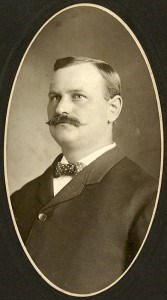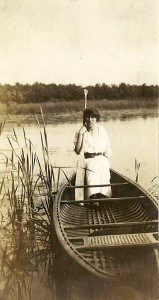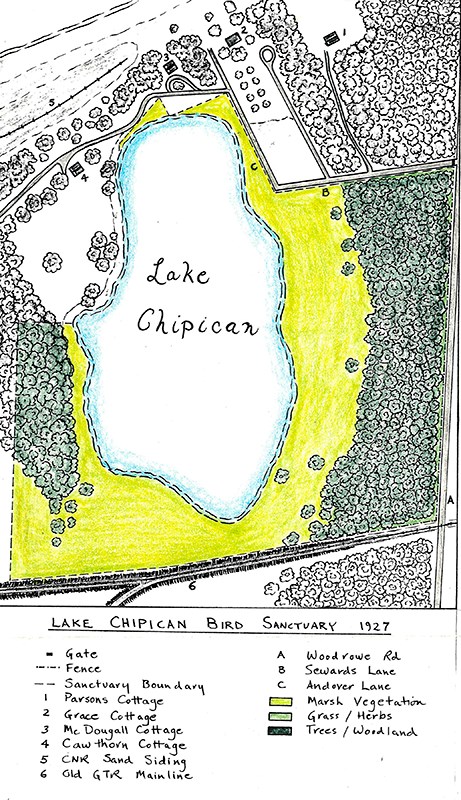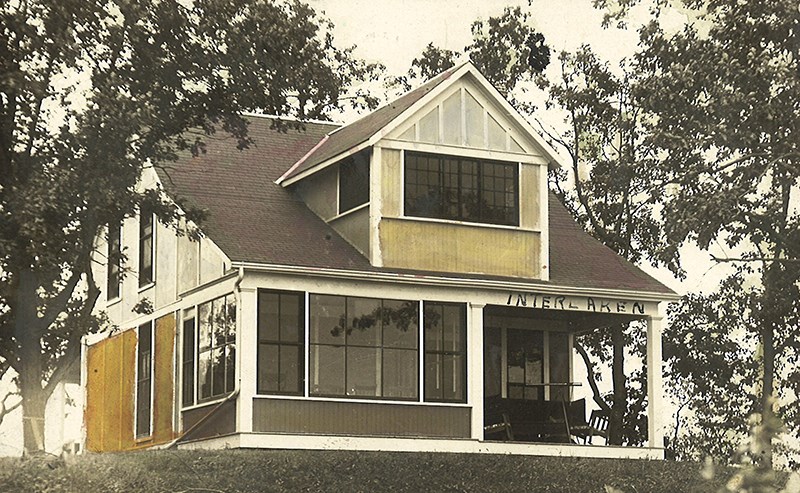George Mathewson
Andover Lane at Canatara Park owes its name to a self-made man who helped establish a sanctuary at Lake Chipican to protect its birds and wildlife.
Thomas Grace came to Canada in the 1880s as a teen with $50 in his pocket and a drive to succeed. And succeed he did, founding a thriving Sarnia contracting business and becoming a popular and prominent community leader.

He married Agnes Selkirk and together they raised six daughters and a son at the family home on posh Vidal Street South.
One summer, Grace rented a cottage in what is now Canatara Park to see if his young family would enjoy some time at the beach. It proved so popular that in the early 1900s he bought 3.5 acres between Lake Huron and Lake Chipican and built a summer home on it, known as “Interlaken.”
He called the laneway leading into it Andover Lane, after the English town near his own ancestral home.
Grace developed an appreciation for the natural beauty of Lake Chipican, and according to newspaper accounts was instrumental in the creation of a wildlife reserve to protect the oak woods and cattail marshes encircled it on three sides.
The National Parks Commission in Ottawa made Thomas Grace an honourary game warden to keep on eye on poachers. He took the role seriously, and during an especially bitter winter in the 1920s he was known to put out feed for the birds, a practice that remains popular on the pond’s north shore to this day.
“He was one of the early settlers here and it was a very different place back then,” said his granddaughter Jane Hunter, an eminent Sarnia artist.
“On the other side of Lake Chipican there used to be a hotel, and there was an area where they brought in cattle.”

Grace was a charter member of the Rotary Club and president of the Chamber of Commerce. He built the former water plant at the mouth of Lake Huron and did the carpentry and roofing on the old Carnegie Library.
It was said of him that he never missed an opportunity to improve his community, and when Grace died in 1931 of complications from diabetes the obituary noted his funeral procession at St. Paul’s United Church was the longest in memory.
Hunter said the natural places her grandfather helped preserve for future generations had a deep influence on her as a child, and her own career as a watercolour painter. Today she lives with husband Don on a corner lot of the original property, in a home also called Interlaken.
“We were always here in the summer, visiting and having tea on a little stone lookout overlooking the lake,” said Hunter, whose nature-themed paintings can be found in private collections on five continents.
“I have so many happy memories of this place, going on walks when it was all wooded; looking at the different trees.”
Thomas and Agnes Grace stressed the importance of a liberal arts education with their seven children. Each received training in piano or voice or both, and following high school were offered the choice of attending college, university or taking a trip overseas.
“Is it genetic? I know my interest in drawing started very early,’” said Hunter. “Both my mother and father encouraged me in painting at a very early age.”
- With files from Tom St. Amand and Randy Evans

